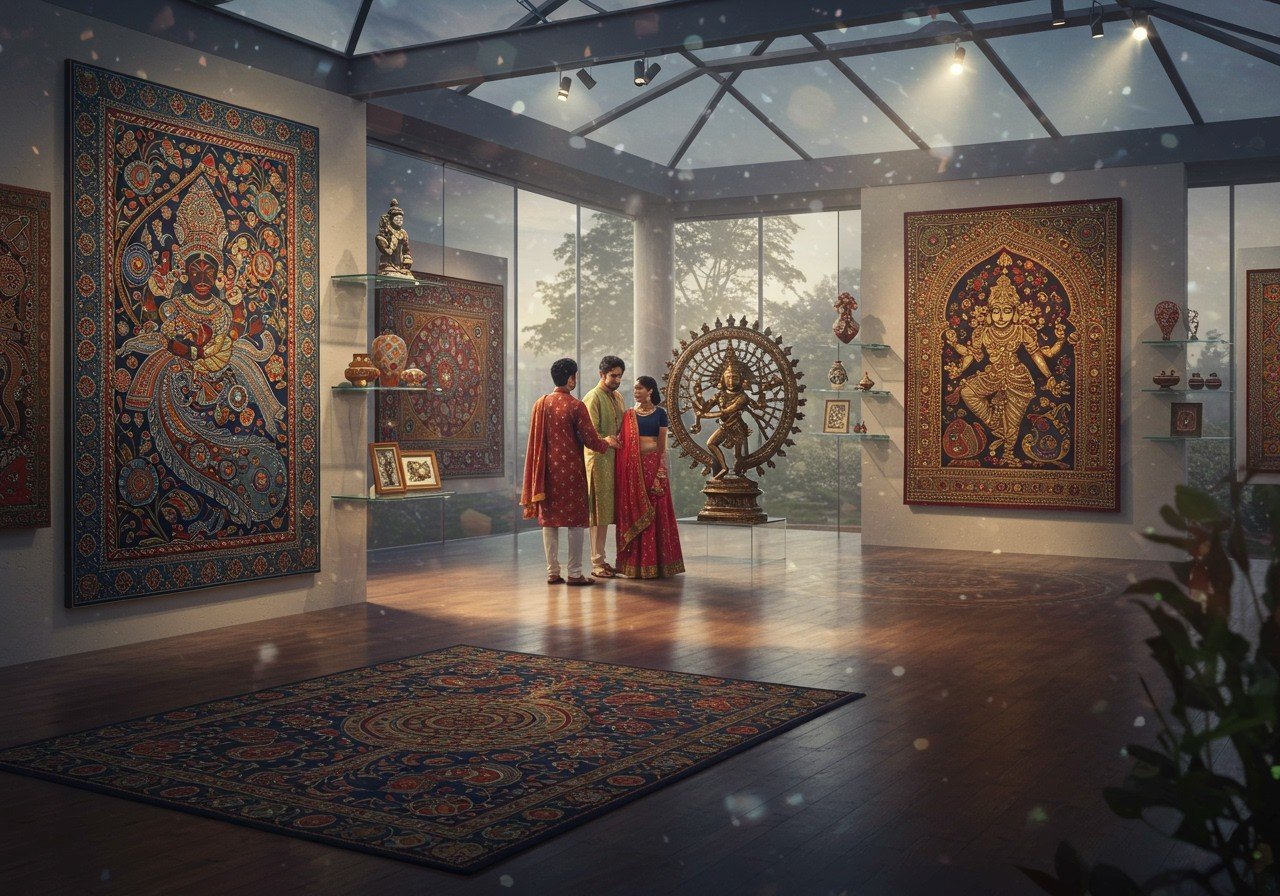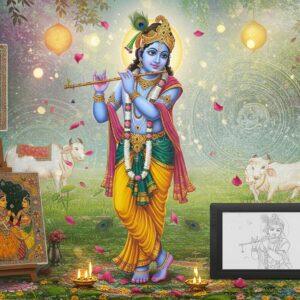
Indian art, renowned for its rich history, vibrant colors, and intricate designs, offers a captivating world for collectors. From traditional paintings to modern sculptures, the diverse landscape of Indian art presents a vast array of styles and mediums. This comprehensive guide will equip new collectors with essential knowledge, from understanding different art forms to navigating the art market and building a valuable collection.
Types of Indian Art
Understanding the diverse types of Indian art is crucial for any collector. Let’s explore some prominent forms:
Traditional Paintings
- Madhubani: Originating from Bihar, Madhubani paintings are characterized by vibrant colors, detailed patterns, and depictions of nature and mythology. These paintings often narrate epic tales and celebrate festivals.
- Warli: Hailing from Maharashtra, Warli paintings showcase simple, monochromatic designs that depict daily life and tribal rituals. These minimalist yet expressive paintings offer glimpses into the cultural fabric of the Warli tribe.
- Tanjore: Tanjore paintings, from Tamil Nadu, are renowned for their rich colors, opulent gold foil work, and depictions of deities and religious themes. These elaborate paintings are often adorned with precious stones and embody a sense of divine grandeur.
Contemporary Art
Contemporary Indian art reflects modern themes and techniques, with artists experimenting with diverse styles and mediums. This dynamic art form embraces innovation and pushes creative boundaries.
Folk and Tribal Art
- Cultural Significance: Folk and tribal art represent local traditions and stories, each piece narrating a unique tale about the community it originates from. These art forms offer valuable insights into the cultural heritage of different regions.
- Regional Styles: From the detailed and colorful Rajasthani miniature paintings to the intricate patterns of Kerala murals, regional styles showcase distinct artistic expressions. Exploring these variations adds depth to any art collection.
Sculptures
Indian sculptures carry historical context, ranging from bronze statues of gods to terracotta figures used in rituals. These three-dimensional art forms embody religious beliefs and artistic skill.
Textile Arts
- Embroidery: Detailed needlework creates beautiful patterns on fabrics, with each region boasting unique styles like Phulkari from Punjab. These intricate embroideries showcase the artistry of textile traditions.
- Weaving: Traditional weaving methods produce unique fabrics like Banarasi silk from Varanasi. These exquisite textiles are prized for their intricate designs and rich textures.
Where to Buy Indian Art
Finding authentic Indian art requires navigating various sources:
Trusted Sources
- Galleries: Established galleries with a strong reputation often curate high-quality collections of Indian art. These galleries provide expert guidance and ensure authenticity.
- Auction Houses: Auction houses are known for curating high-quality collections and offering a variety of artworks verified by experts. Participating in auctions can be an exciting way to acquire unique pieces.
Online Platforms
Many online platforms, including Laasya Art, host verified sellers with certifications, making it convenient to buy authentic art pieces. These platforms offer a wide selection and often ship internationally.
Other Avenues
- Art Fairs and Exhibitions: These events offer opportunities to interact with artists and learn about their work firsthand.
- Artist Studios and Workshops: Visiting studios allows you to experience the creation process and commission custom pieces.
- Government-supported Institutions: Institutions like the National Gallery of Modern Art house extensive collections and host exhibitions.
- Networking: Connecting with other collectors can provide valuable recommendations and insights.
Indian Art for Sale: Key Considerations
When looking for Indian art for sale, consider these key points:
- Provenance: Always check the artwork’s history and ownership details to ensure its authenticity.
- Certification: Look for certifications that verify the artwork’s genuineness.
- Expertise: Consult art dealers for guidance on sourcing genuine pieces.
- Fake Art: Be cautious of fake or reproduction art and learn how to identify genuine pieces.
Poojn.in: Your Gateway to Authentic Indian Cultural Goods
For those seeking authentic Indian ritual items and art, Poojn.in stands out as India’s leading online store. Offering a wide selection of genuine products, Poojn.in caters to diverse cultural and religious needs. Explore their collection of brass Lakshmi murtis, gold sindoor, and other essential items. Poojn.in provides a seamless online shopping experience with secure delivery, ensuring a convenient way to acquire authentic Indian cultural goods.
Conclusion
Collecting Indian art is a rewarding journey. By understanding different art forms, knowing where to buy authentic pieces, and considering key factors like provenance and certification, you can build a meaningful collection. Embrace the beauty and history of Indian art, and support the talented artists who preserve these rich traditions.


